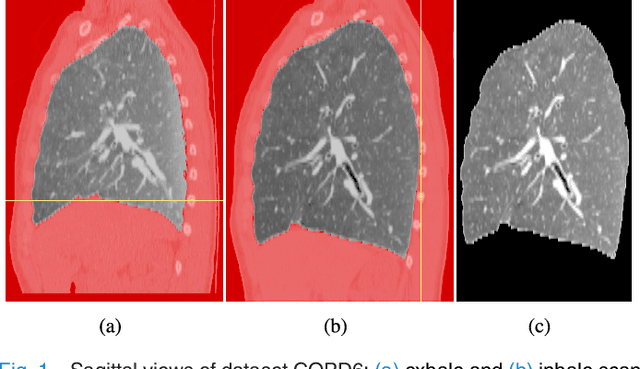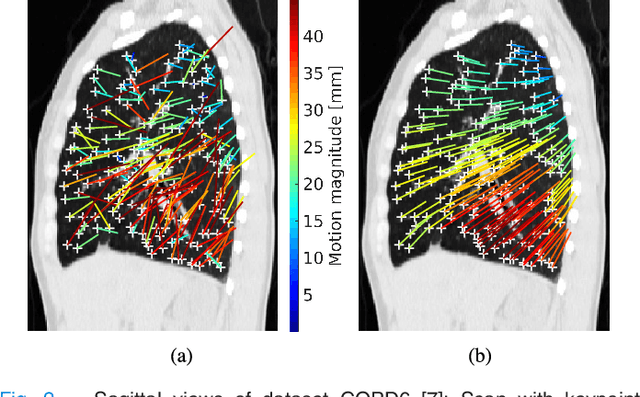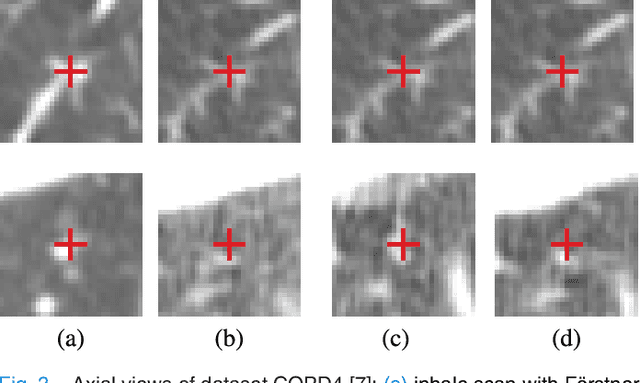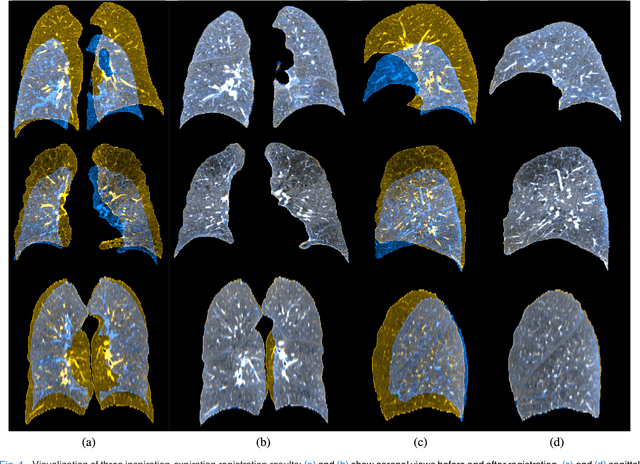Thomas Polzin
Estimation of Large Motion in Lung CT by Integrating Regularized Keypoint Correspondences into Dense Deformable Registration
Jul 02, 2018



Abstract:We present a novel algorithm for the registration of pulmonary CT scans. Our method is designed for large respiratory motion by integrating sparse keypoint correspondences into a dense continuous optimization framework. The detection of keypoint correspondences enables robustness against large deformations by jointly optimizing over a large number of potential discrete displacements, whereas the dense continuous registration achieves subvoxel alignment with smooth transformations. Both steps are driven by the same normalized gradient fields data term. We employ curvature regularization and a volume change control mechanism to prevent foldings of the deformation grid and restrict the determinant of the Jacobian to physiologically meaningful values. Keypoint correspondences are integrated into the dense registration by a quadratic penalty with adaptively determined weight. Using a parallel matrix-free derivative calculation scheme, a runtime of about 5 min was realized on a standard PC. The proposed algorithm ranks first in the EMPIRE10 challenge on pulmonary image registration. Moreover, it achieves an average landmark distance of 0.82 mm on the DIR-Lab COPD database, thereby improving upon the state of the art in accuracy by 15%. Our algorithm is the first to reach the inter-observer variability in landmark annotation on this dataset.
* 12 pages, 7 figures, \c{opyright} 2017 IEEE. Personal use is permitted, but republication/redistribution requires IEEE permission
 Add to Chrome
Add to Chrome Add to Firefox
Add to Firefox Add to Edge
Add to Edge